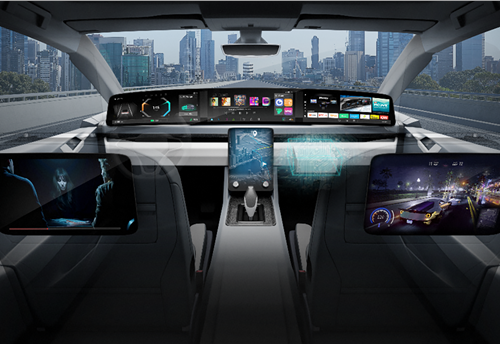World premiere of autonomous driving Mercedes-Benz Future Truck 2025 at IAA Show
From a vision to reality – the spectacular Mercedes-Benz Future Truck 2025 study will be providing a visually exciting and technically feasible take on the long-distance truck of tomorrow at the 2014 International Commercial Vehicle show (IAA)
From a vision to reality – the spectacular Mercedes-Benz Future Truck 2025 study will be providing a visually exciting and technically feasible take on the long-distance truck of tomorrow at the 2014 International Commercial Vehicle show (IAA), to be held from September 25 to October 2 at Hannover Exhibition Grounds.
In ten years' time, trucks could be driving autonomously on motorways. Transport efficiency will increase, traffic will be safer for all road users, and fuel consumption and CO2 emissions will be further reduced. To do this Mercedes-Benz connects existing assistance systems with enhanced sensors to the Highway Pilot system. Autonomous driving is already possible at realistic speeds and in realistic motorway traffic situations. The Mercedes-Benz Future Truck 2025 provides a glimpse of the future shape of trucks.
Revolution on the motorways
The technology of tomorrow is already reality at Daimler Trucks. The Mercedes-Benz Future Truck 2025 is not a new truck, but rather the key element in the interconnected transport system of the future. It is being developed as part of the ‘Shaping Future Transportation’ initiative by Daimler Trucks to conserve resources and reduce emissions of all kinds.
The prototype demonstrated the exciting capabilities of the Future Truck 2025 back in the summer at speeds of up to 80kph in realistic traffic situations on a section of the A14 motorway in Magdeburg, Germany. Now the exterior and interior of that same vehicle are being revealed. The tractor unit combined with an aerodynamically optimised trailer celebrates its world premiere as a study at the International Commercial Vehicles show (IAA).
Exterior: flowing forms with a light show
In terms of design, the Mercedes-Benz Future Truck 2025 study combines function, efficiency and emotion in a fascinating way. It adheres to the Mercedes-Benz design philosophy of ‘Sensual Purity’. Soft, slightly curved surfaces that are near-natural represent both efficiency and emotion. Inside and outside, the exceptional visual appearance symbolises the great leap from classic truck to autonomous transport vehicle of the future. Innovative forms and the lighting engineering of tomorrow send the conventional truck cab into the future.
The designers have leveraged the opportunity presented by future length specifications: extending the front section allows soft, aerodynamically flowing forms to be created. Visual effects from the paintwork in light silver emphasise the enticingly smooth contours. Compact cameras replace conventional exterior mirrors. Its windscreen resembles a visor. The study's integral sun screen and aero roof have a distinctive form.
The Future Truck 2025 comes to life when the engine starts. LEDs illuminate the surfaces and light up the paintwork. The front mask gleams and LED bulbs shine instead of conventional headlamps to the left and right in the bumper. Orange flashing lights indicate when the truck is changing direction.
When the fully drivable study is being controlled manually and on the move, the lights are white. When the truck is driving autonomously, the colour of the lights changes from white to blue. They then pulsate strongly, thus symbolising the truck's powerful heartbeat and clearly indicating the vehicle's current operating mode to other road users.
Interior: calming design for a new way of working
The sensual purity of the Future Truck 2025's calming design is also reflected by the interior. Flowing lines from the exterior are taken up again inside the cab. The interior is compelling as the focus is on essential functions and the design is almost puristic. The workplace for driving is calm and uncluttered like a modern, paperless office. Utilitarian engineering is excitingly juxtaposed with natural materials and a feeling of cosiness and warmth.
When the truck is travelling autonomously, the driver may recline their seat and also turn it by 45 degrees into the space, allowing them to consciously adopt a relaxed, comfortable working position. At the same time, indirect lighting illuminates the interior without glare.
To communicate from the future workplace the driver uses a tablet computer. This is accommodated in the newly designed centre console but is removable. Here the driver can process documents, schedule more destinations, accept further orders and arrange the next break. The computer screen can be configured to suit individual requirements, also enabling the driver to call up all key trip data.
On long routes driven autonomously, the tablet computer becomes as crucial as the steering wheel and pedals are otherwise. The Mercedes-Benz Future Truck 2025 ushers in a new way of working in the cab of a long-distance truck.
As an overall concept it combines the high-tech driver's area of the future with a state-of-the-art, paperless office and a living room. The driver in the Mercedes-Benz Future Truck 2025 feels at home even when on the move thanks to the digital picture frame on the cab's rear panel: here personal photographs of family or a past holiday scroll through on the screen. Despite all its functionality and efficiency, this high-tech truck also shows emotion.
Radar sensors and a camera scan the surroundings
The technology behind this exciting façade is no less impressive. Radar sensors and camera technology enable the Future Truck, which is also equipped with Blind Spot Assist, to drive autonomously, independently of other vehicles or central control stations. The highly intelligent Highway Pilot system resembles the autopilot on an aircraft.
A radar sensor in the lower area of the front end scans the road ahead at long and short range. The front radar sensor has a range of 250 m and scans an 18-degree segment. The short-range sensor has a range of 70 m and scans a 130-degree segment. The radar sensor is the basis for the proximity control and emergency braking safety systems already available today.
A stereo camera installed above the instrument support behind the windscreen keeps the area ahead of the vehicle in view. This is currently the location of a mono-camera if optional Lane Keeping Assist is ordered. The range of the stereo camera is 100 m, and it scans an area of 45 degrees horizontally and 27 degrees vertically.
The stereo camera of the Mercedes-Benz Future Truck 2025 identifies single- or two-lane roads, pedestrians, moving and stationary objects, all objects within the monitored area and also the road surface. The camera recognises everything that contrasts with the background, and is therefore also able to measure clearances precisely. The front stereo camera also registers the information on traffic signs.
In addition to object and distance recognition, the stereo camera recognises lane markings as a major function for autonomous lane guidance.
The road surface to the left and right of the truck is monitored by radar sensors installed in the sides. They are located on the left and right, ahead of the tractor unit's rear axle. The sensors have a range of 60 m and cover an angle of 170 degrees in the longitudinal direction.
Future becomes reality
After joining the motorway, the driver of the Mercedes-Benz Future Truck 2025 merges with the traffic flow in the appropriate lane. The system then prompts the driver to activate the Highway Pilot. The driver activates it, and the vehicle switches to autonomous mode.
According to the given traffic situation, the Future Truck 2025 is on the road independently, as no vehicle in front is needed as a reference to guide it through the traffic. It acts autonomously in its lane. If there is another vehicle travelling ahead, the truck can adapt to its speed within the permitted limit and maintains a set safety distance. It is therefore always possible for other vehicles to join the lane safely. The safety distance is also always maintained – the Mercedes-Benz Future Truck 2025 adapts perfectly to its environment. The Future Truck 2025 operates independently of other road users thanks to networking. However, to fully benefit in terms of logistical efficiency and making optimum use of infrastructure, comprehensive networking is desirable. This development is certain to occur in a gradual manner. Open standards and protocols are important to this end.
Autonomous driving: set to become reality in the short term
One of the most interesting questions on the subject of autonomous driving is the time horizon envisaged for its realisation. In purely technical terms, turning it into reality on the roads is already feasible within around five years. In terms of passenger car development cycles, a possible start is envisaged in 2020. Owing to the more complex factors for heavy commercial vehicles, the time horizon for such vehicles will, however, be rather longer – realistically implementation is possible within 10 years, also in view of the legal considerations that still remain to be clarified.
The introduction of autonomous driving will not happen digitally from one day to the next, as development is progressing in a gradual manner: evolutionary stages are necessary to revolutionise goods haulage on the roads. In the coming years, new and improved assistance systems will continue to pave the clearly set-out way to autonomous driving.
Also read: Wunderbar! Mercedes-Benz’s Future Truck 2025 drives itself http://bit.ly/1meTxgi
RELATED ARTICLES
Antolin unveils sustainable tech solutions at Beijing Motor Show
In line with its China market roadmap, Antolin is showcasing its latest advances in lighting, HMI, electronics, and sust...
Visteon wins $1.4 billion in new business in Q1 2024, launches 26 new products
Digitisation of vehicle cockpit megatrend is a key growth driver for Visteon with over $400 million of displays wins; Vi...
BMW uses Catena-X ecosystem using real-world CO2 data to enhance quality
Working together with partners and suppliers, the company has modelled a complete data chain for the first time using re...





 23 Sep 2014
23 Sep 2014
 3445 Views
3445 Views



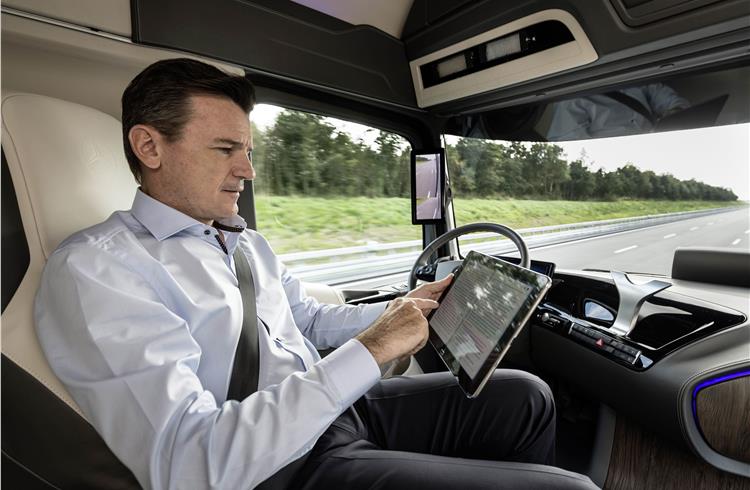
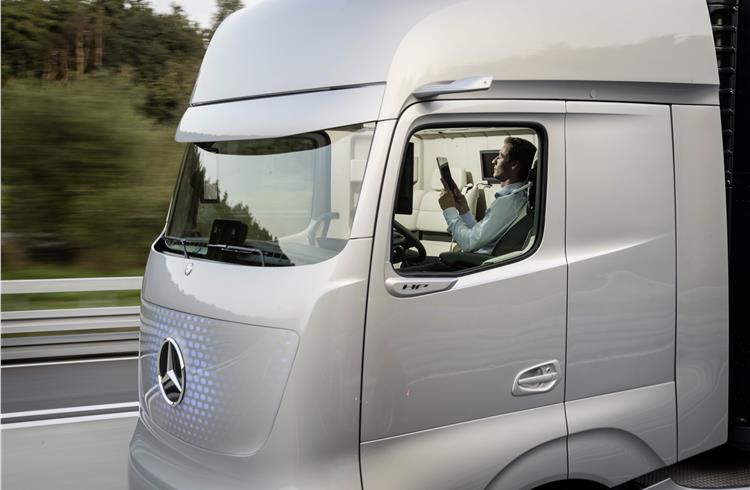
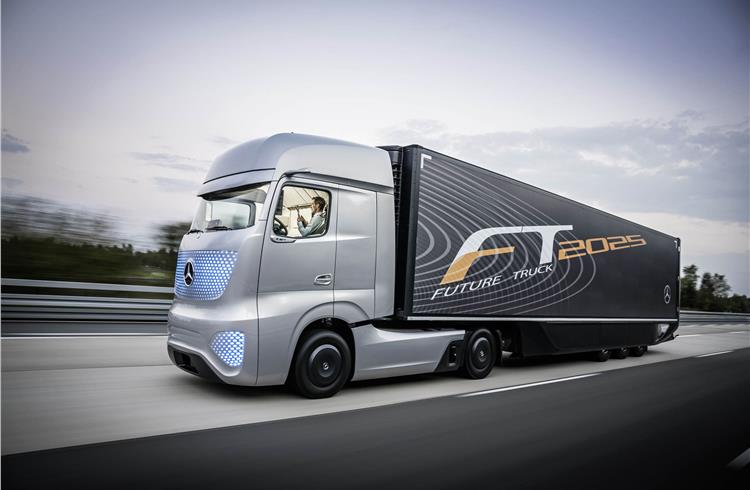
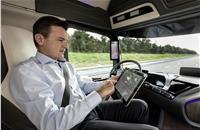
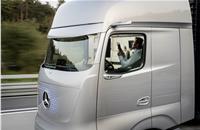
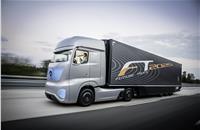
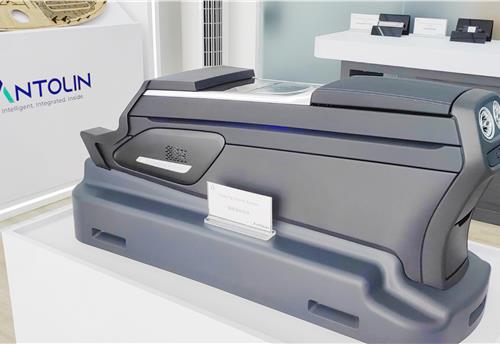
 Autocar Pro News Desk
Autocar Pro News Desk

